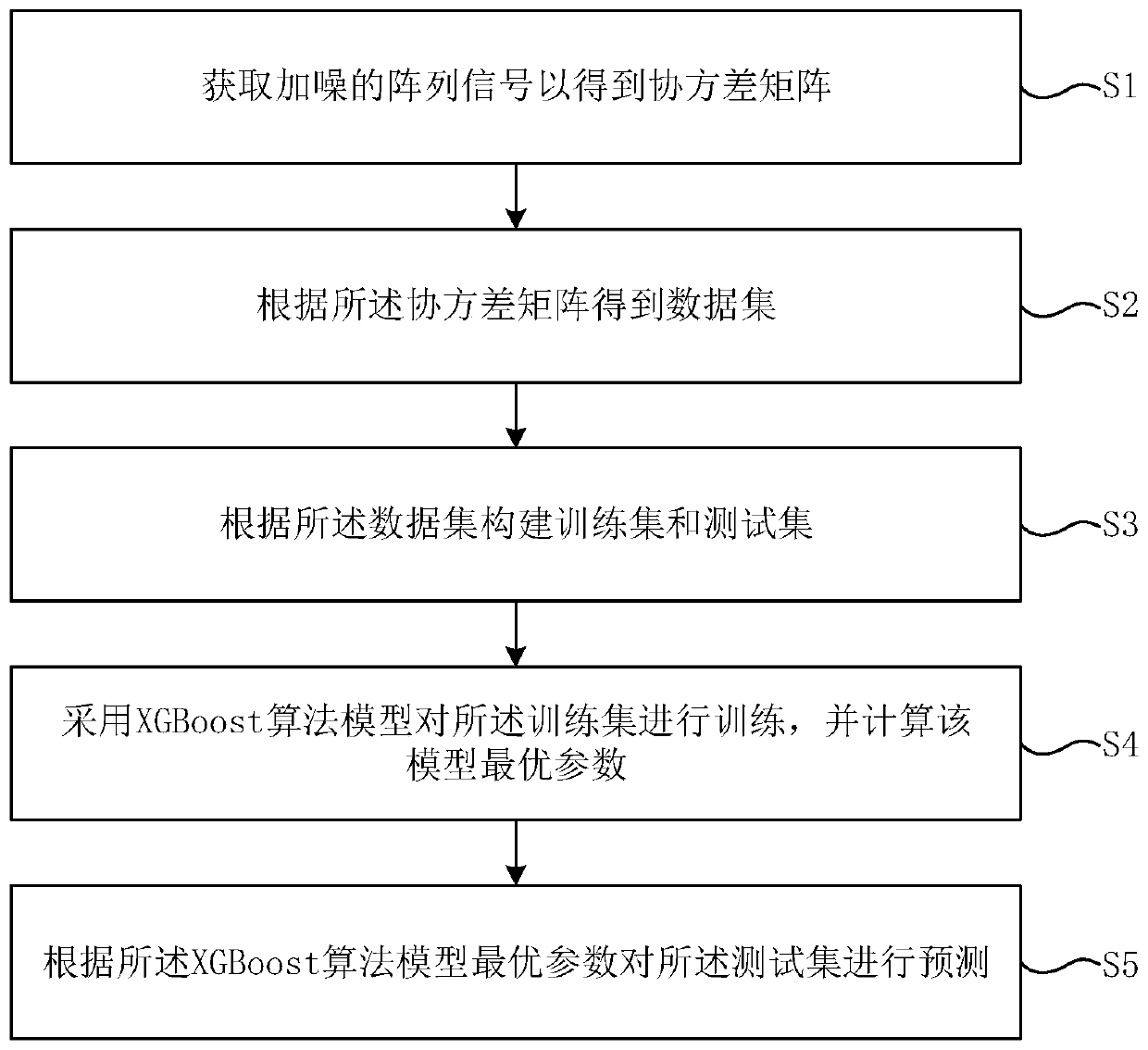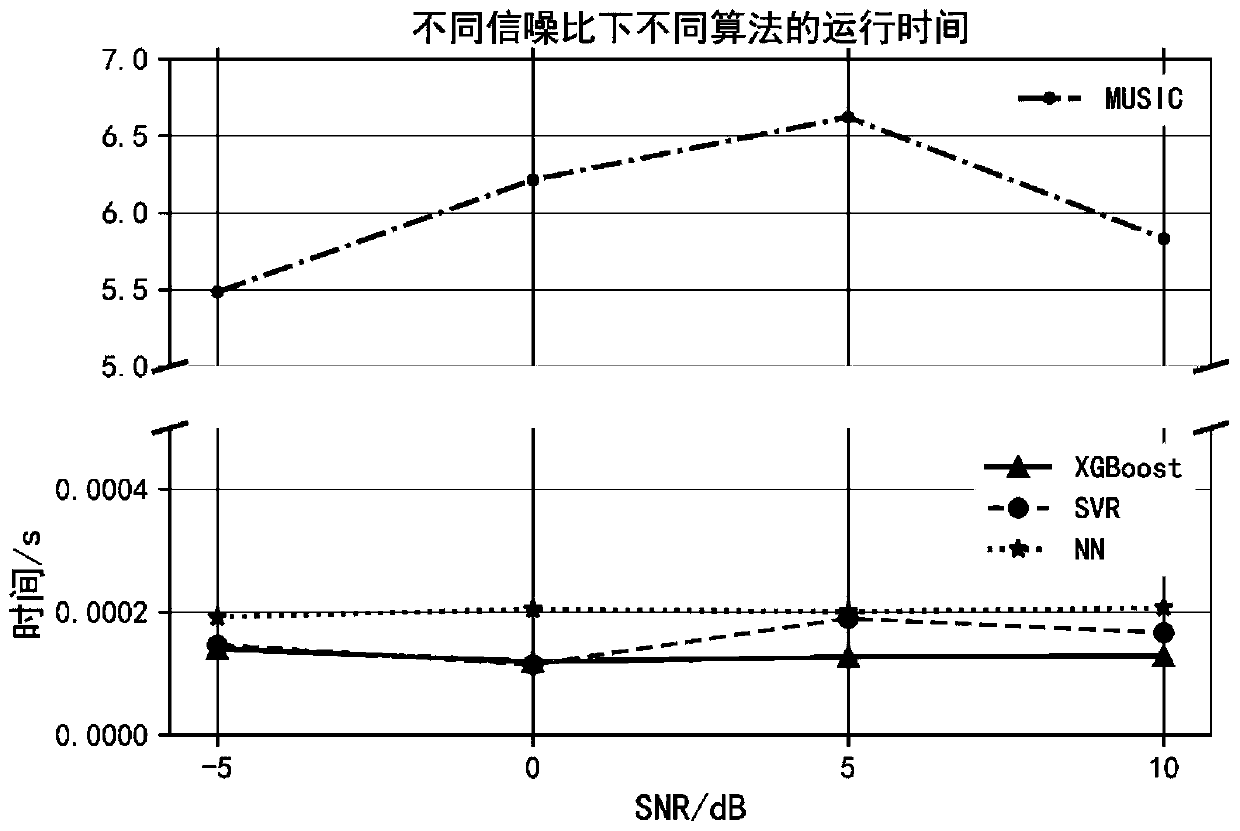DOA estimation method based on machine learning algorithm XGBoost
A machine learning and DOA technology, applied in the field of signal processing, can solve the problems of slow operation speed, large amount of neural network data, weak interpretability, etc. Effect
- Summary
- Abstract
- Description
- Claims
- Application Information
AI Technical Summary
Problems solved by technology
Method used
Image
Examples
Embodiment 1
[0052] See figure 1 , figure 1 It is a schematic flowchart of a DOA estimation method based on the machine learning algorithm XGBoost provided by an embodiment of the present invention, including:
[0053] S1: Obtain the noise-added array signal to obtain the covariance matrix;
[0054] Specifically, suppose that M incoherent narrowband signals are incident on a linear array of N identical array elements uniformly arranged with an array element spacing d (M1 ,θ 2 ,...,θ M ], then the signal received by the i-th antenna element at time t is:
[0055]
[0056] Where s m (t) is the m-th narrowband signal; λ represents the wavelength; n i (t) means that the mean is 0 and the variance is σ 2 The additive white Gaussian noise.
[0057] Further, it is expressed in matrix form as:
[0058] X(t)=A(θ)S(t)+N(t);
[0059] In the formula, A(θ) is an N×M-dimensional direction matrix; S(t) is an M×1-dimensional signal vector containing complex amplitude information; N(t) is an N×1-dimensional noise vec...
Embodiment 2
[0125] The effect of the present invention will be further illustrated by simulation experiments below.
[0126] Simulation conditions:
[0127] Set the number of arrays to 8, the array element spacing is 0.5m, the number of snapshots is 512, and the incident angle is a random value from -85° to 85°.
[0128] Simulation content:
[0129] Simulation experiment one
[0130] The traditional MUSIC algorithm, neural network algorithm (NN), support regression algorithm (SVR) in the support vector machine and the XGBoost algorithm of the present invention are experimentally compared.
[0131] First, construct the training set; specifically, it is randomly generated from the incident angle -85°~85°, the signal-to-noise ratio SNR=-5dB, 0dB, 5dB, 10dB, and 12000 training samples are randomly generated under different signal-to-noise ratios.
[0132] Then the test set is constructed; specifically, it is randomly generated from the incident angle -85°~85°, the signal-to-noise ratio SNR=-5dB, 0dB, 5dB...
PUM
 Login to View More
Login to View More Abstract
Description
Claims
Application Information
 Login to View More
Login to View More - Generate Ideas
- Intellectual Property
- Life Sciences
- Materials
- Tech Scout
- Unparalleled Data Quality
- Higher Quality Content
- 60% Fewer Hallucinations
Browse by: Latest US Patents, China's latest patents, Technical Efficacy Thesaurus, Application Domain, Technology Topic, Popular Technical Reports.
© 2025 PatSnap. All rights reserved.Legal|Privacy policy|Modern Slavery Act Transparency Statement|Sitemap|About US| Contact US: help@patsnap.com



